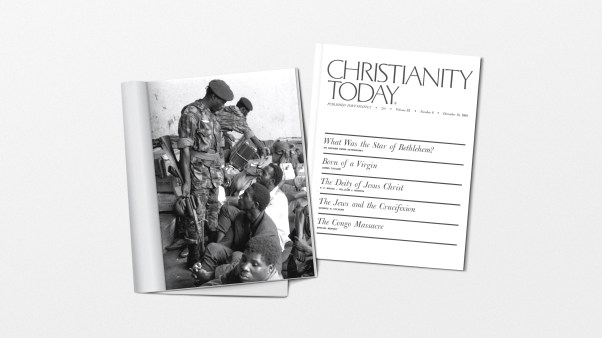Trail of blood
The Martyrs Mirror (1660), an Ana-baptist martyrology, has as its full title "The Bloody Theater or Martyrs Mirror of the Defenseless Christians Who Baptized Only Upon Confession of Faith, and Who Suffered and Died for the Testimony of Jesus, Their Saviour, From the Time of Christ to the Year A.D. 1660."
A-Fording them a higher profile
By the 1980s, annual visitors to Lancaster County's "Amish country" numbered above 4 million. The 1985 Harrison Ford film "Witness" increased the flood even further (though not doubling it as predicted).
"Are you saved?" … "Ask my neighbors"
As with the family above, the early Brethren (Dunkers)—a cousin movement to the Mennonites and Amish—practiced a lively evangelistic outreach. But the typical Anabaptist emphasis on showing, not just telling, one's faith remained strong. When Brethren evangelist Rufus P. Bucher was asked by a stranger in a railway station, "Brother, are you saved?" He replied that since he might be prejudiced on the question, his interrogator should go ask his wife, children, and neighbors. "I'll be ready to let their answers stand as my own."
You may be more Mennonite than you think
Many American Christians simply assume that the state has no business dictating church beliefs or practices, that a church should be a gathered body of believers rather than a net that scoops up everyone within the area of a parish, and that baptism is a step of obedience upon profession of faith. What most do not know is that Mennonites were the first (surviving) group of Christians to insist on these things, and that they died by the thousands for doing so.
Plain dress not so simple
To the outsider, the Anabaptists' plain dress looks oppressively uniform. But really study plain dress, and you'll find a dizzying array of differences. In his book Why Do They Dress That Way? Brethren scholar Stephen Scott charts out these differences. Amish women may wear a straight or a crossed cape, a Midwest, Lancaster, or "Nebraska" back, and a rectangular or triangular shawl. Amish men may sport hats with a plain, creased, depressed, or flat crown; and wear X-type, H-type, Y-type, or single strap suspenders. Mennonite women choose between Reformed, Wenger, or Victoria bonnets—all with chin straps—or wear a bonnet without a strap, called a "beanie" bonnet. And Mennonite and Brethren men wear either a frock or sack coat.
Just another farming group
Public fascination with the Lancaster County Amish began early in the 20th century with romanticized images of Amish life like the WPA poster above and theatrical treatments like the 1955 musical Plain and Fancy. But throughout most of the 19th century, the Amish numbered fewer than 5,000, and the nation had not progressed in technology and culture to the point where they stood out. The press and public generally tended to ignore them.
Give us this day our daily bread
All Brethren celebrate the "love feast" twice each year. But the Old Order River Brethren (so named because upon joining they were baptized in the Susquehanna River, Pennsylvania) reserve a special role for their women in preparing for the feast. Breadmaking—mixing, kneading, and baking unleavened bread used for communion—is part of the ceremony itself. At long trestle tables in the main meeting room, the sisters (baptized women) work the dough, while the brothers stand by and preach a spiritual interpretation of the act. Preparing the bread together in this way reinforces the unity of Christ's body; leaving leaven out of the bread is akin to getting rid of any kind of pride or spiritual impurity.
Going—and staying—"Dutch"
Pennsylvania German, or Pennsylvania Dutch (Pennsilfaani-Deitsch), is a High German language spoken by 150,000 to 250,000 people in North America. ("Dutch" is an archaic English term meaning "German.") Only Amish and Old Order Mennonites are passing the language along to their children in the current generation, although they were originally minority groups within the Pennsylvania German-speaking population. In these cultures, the language is a sign of Demut or humility, and the language serves as a barrier against the outside world. With the high birth rate in Amish communities, the possibility is great that the language will survive at least in the short term.
Copyright © 2004 by the author or Christianity Today/Christian History & Biography magazine. Click here for reprint information on Christian History & Biography.










